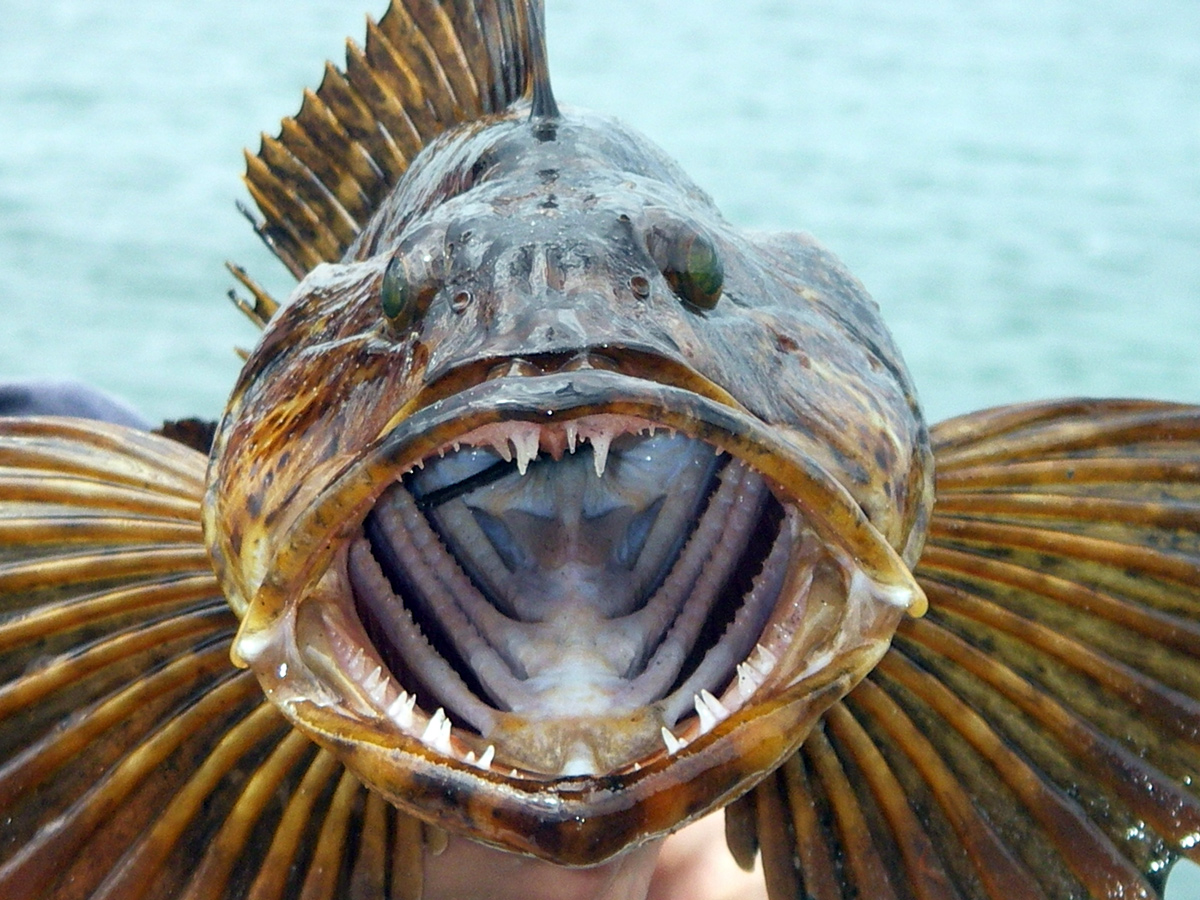Scientists counted more than 10,000 teeth to find out how quickly the fish regrows its lost chompers.
If you’re a tasty squid or crab, a Pacific lingcod’s mouth is the last place you want to be. The omnivorous fish, which can grow up to five feet in length and weigh 80 pounds, has more than 500 needle-sharp, tiny teeth lining its two sets of jaws. A new study found that Pacific lingcod will lose up to 20 teeth a single day—and grow them all back.
:focal(2837x1723:2838x1724)/https://tf-cmsv2-smithsonianmag-media.s3.amazonaws.com/filer_public/bb/a5/bba5a02d-9857-45c5-90b5-6571cd586d8f/gettyimages-1319711669.jpg)
“Every bony surface in their mouths are covered in teeth,” says Karly Cohen, a doctoral candidate at the University of Washington and a co-author of the new study, to Live Science’s Cameron Duke.
Lingcod are voracious predators that use their cluster of teeth and mobile jaws to help them scarf down almost anything, including other lingcod about their same size. Behind the fish’s first set of jaws is another set, called pharyngeal jaws, that the fish uses to munch food like humans use molars.

“The lingcod have a set of upper and lower jaws, just like ours, but they’re more mobile—they can be thrown forward and spread out,” Cohen tells Elizabeth Anne Brown for National Geographic. “If you look inside the mouth on their palate, it’s also covered in teeth.”
But how the fish maintain the sharpness of their teeth has long been a mystery. The new research, recently published in Proceedings of the Royal Society B, found that the species replaced roughly three percent of their teeth daily—roughly the same as a human losing and regrowing a new tooth every day.

“Kind of makes braces useless,” says Adam Summers, professor of biology at the University of Washington and co-author of the study, to National Geographic. “And brushing.”
To find out exactly how quickly the fish replace their teeth, scientists observed 20 Pacific lingcod at their lab over several days. First, the fishes’ tank water was infused with a red dye that stained their teeth. Then, the fish were returned to regular seawater for ten days. After those ten days, scientists placed the fish in a tank with green dye. The oldest teeth were stained both red and green, while the new teeth were only green. After examining more than 10,000 tiny lingcod teeth, the team was able to determine the pace at which the fish lose and regrow their teeth.
This rapid regeneration of teeth is critical to the lingcod’s hunting strategy, says Kory Evans, a fish ecologist at Rice University in Houston who was not involved in the study. “The duller a lingcod’s teeth are, the harder it is going to be for it to hold on to its prey. So having the ability to shed teeth and replace them is pretty important,” he tells Annie Roth for the New York Times. “All your teeth need to be on point.”

Previous research of fish tooth replacement comes primarily from sharks, which have multiple rows of teeth that are continuously being replaced. But because shark teeth are different than most fish teeth, this discovery in lingcod could help scientists better understand the process of tooth replacement in all fishes, reports Annie Roth for the New York Times.
“Most fish have teeth like lingcod,” Cohen tells National Geographic. “And so it could very well be that most fishes are losing mass amounts of their teeth daily” and quickly regrowing them.
Scientists also found that the Pacific lingcod’s two sets of jaws replenish teeth at different rates. The secondary pharyngeal jaws seem to lose teeth the fastest, a phenomenon the team hopes to investigate next.




